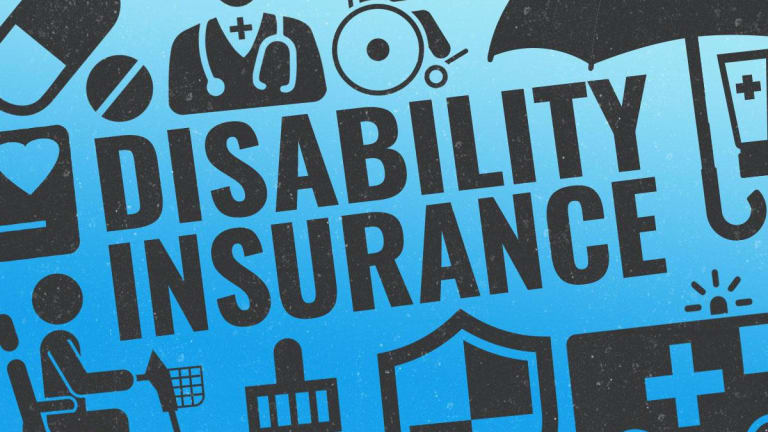Assistance
Plan Ahead: Disability Insurance
While many people get disability benefits through Social Security Disability Claims, it is not the only way to ensure financial stability when fighting a chronic illness. You can also purchase your own insurance policy to cover claims, or may even already have one offered by your employer.
The trouble is, while it is easy to get disability insurance, it is much harder to get approval for your claim. So, how can you get paid?


Examine Your Policy
First, get a copy of your policy and read it thoroughly. While it is best to do this before any potential claims arise, it is not always possible. It may be necessary to read it in conjunction with a caregiver. It is important to note that while you may medically qualify for a claim, you will not be entitled to compensation unless it is specifically covered in your policy.
Below is a quick checklist of questions to ask yourself while reviewing your policy:
- Is your policy for short-term or long-term disability?
- When and how are your approved claims taxed?
- What is the maximum benefit period?
- Is the benefit amount % based or fixed?
- Are you able to work while disabled or make residuals?
- What exclusions and limitations are there?
All of the answers to these questions should be within your policy document. You can begin to take the next steps yourself, but for best results, we recommend you work with a lawyer. Most firms will provide a complimentary review of your policy to see what compensation you may be eligible for.
To learn more about if you may qualify, watch this video:
Know the Law
In disability insurance, there are two legal frameworks: ERISA (Employee Retirement Income Security Act) and Non-ERISA. The main differences who gets which type of plan, the protections offered, as well as the appeals and lawsuit processes for claimants. For example:
ERISA
- Governed by federal law and is available to anyone receiving benefits from their employer. There are excluded parties listed in the non-ERISA section.
- Participants in an ERISA governed plan must meet specific deadlines and follow an appeal process determined by the plan before a claim can be filed in court.
- If the plan’s sponsor denies benefits and provides an invalid reason, or fails to give any reason at all, then the participant has a right to appeal the plan’s decision. Only after the available appeals under the plan have been exhausted may a participant then file a lawsuit for the wrongful denial of benefits in an effort to obtain their entitled to benefits.
Non-ERISA
- If you purchased a personal plan from a broker, or are employed by a religious organization, school, hospital, or non-profits then you have a non-ERISA plan.
- Since these plans are governed by state laws, you will need to do additional research to see what protections exist in your state.
As briefly mentioned above, bad-faith denials can happen. That is why it is important to make a well-rounded and accurate claim to ensure when you appeal or go to court, your side of the story shines bright.
Make a Claim
Once you learn more about your policy and the law, it is time to make a claim. You can either gather evidence and prepare the claim yourself, or you can work with a lawyer. It is important to note that if you work with a lawyer, then the insurance companies are legally required to go through them for information, rather than potentially reaching out to you directly, or even your family, friends, and colleagues.
When you make a claim, insurance companies will usually request or be required to:
- Question your doctor by getting an attending physician statement.
- Review your financial information such as tax forms, pay stubs, and more.
- Surveil you to get any information that may help them deny your claim.
Support Your Claim
Since tick-borne diseases are not always directly named in an insurance policy, it is important to determine the symptoms that you are experiencing which have made you unable to work. Once decided in conjunction with your doctor and lawyer, you will need to make sure to stick to the symptoms and/or illness name you use when filing your claim. If you make changes partway through the claim process it will weaken and likely disqualify your case.
Specific to tick-borne disease it is important to note that insurance companies are only legally required to pay for 2 years of disability coverage if the claim is attributed to a mental disorder. You will need to make sure the physical symptoms come first, and any psychiatric issues are attributed to deterioration as a part of the illness, and given the fact, you have become disabled.
When filing your claim forms, never limit the information to the space provided on the forms. You are legally allowed and encouraged to attach supplementary material about your claims at the end of the forms. One of those attachments required is your attending physician’s statement. Make sure you read the statement before they send it to ensure they have accurately told your story. If you have an uncooperative doctor, then it may be necessary to find another one. While “doctor shopping” is frowned upon and can weaken your case, you need to find someone who not only is able to treat you well but understands your needs.
One of the biggest hurdles for claim approval is proving that you are no longer able to work. Make sure everyone on your team understands your profession and the ways your illness has prevented you from doing it. Getting supplementary support written by a former employer on your performance prior to your illness will also be extremely impactful.
You may also seek additional ways to prove you are physically unable to perform tasks. One of the most effective ways to do this is by taking a CPET (cardiopulmonary exercise test). The focus of this is to determine post-exertional malaise after exposure to a stressor. The test monitors oxygen usage to see recovery responses, as well as to gauge workload and metabolism responses. It can usually prove that oxygen intake is above the daily anaerobic threshold. Even a sedentary job requires more energy than a chronic illness patient could likely sustain without bringing on additional symptoms, meaning benefits are more likely to be approved.
When taking a CPET, make sure to find an office that offers 2-day tests. Most labs or medical providers use a single test that can make results deceiving, especially if a patient is able to function normally at times. The 2-day test is a more accurate indicator for chronic illness patients because Day 1 provides a baseline of physical capabilities and can stress the patient, providing an accurate reading on Day 2 because results will be based on flared up symptoms.
To learn more about CPET tests and how they could help you get approved for coverage, read this blog written by the Workwell Foundation discussing their two-day test developed specifically for patients impacted by chronic illness.
Avoid Pitfalls
As previously stated, insurance companies will surveil you looking for any reason to deny your claim. Below is a helpful list of things to avoid doing
- Do not overstate on social media, if anything stay off of it. Photos can misrepresent how you feel and what you do with your time.
- Any unhelpful physicians should be avoided.
- Never say never or always when referring to your symptoms or actions. These words can be used against you.
- Make sure to describe that you have good days and bad days. This will help to mitigate surveillance issues and maintain your credibility.
- Focus on written correspondence. This allows you to control the narrative.
For additional education on how to support your claim and what pitfalls to avoid, watch this webinar offered by Kantor and Kantor:

